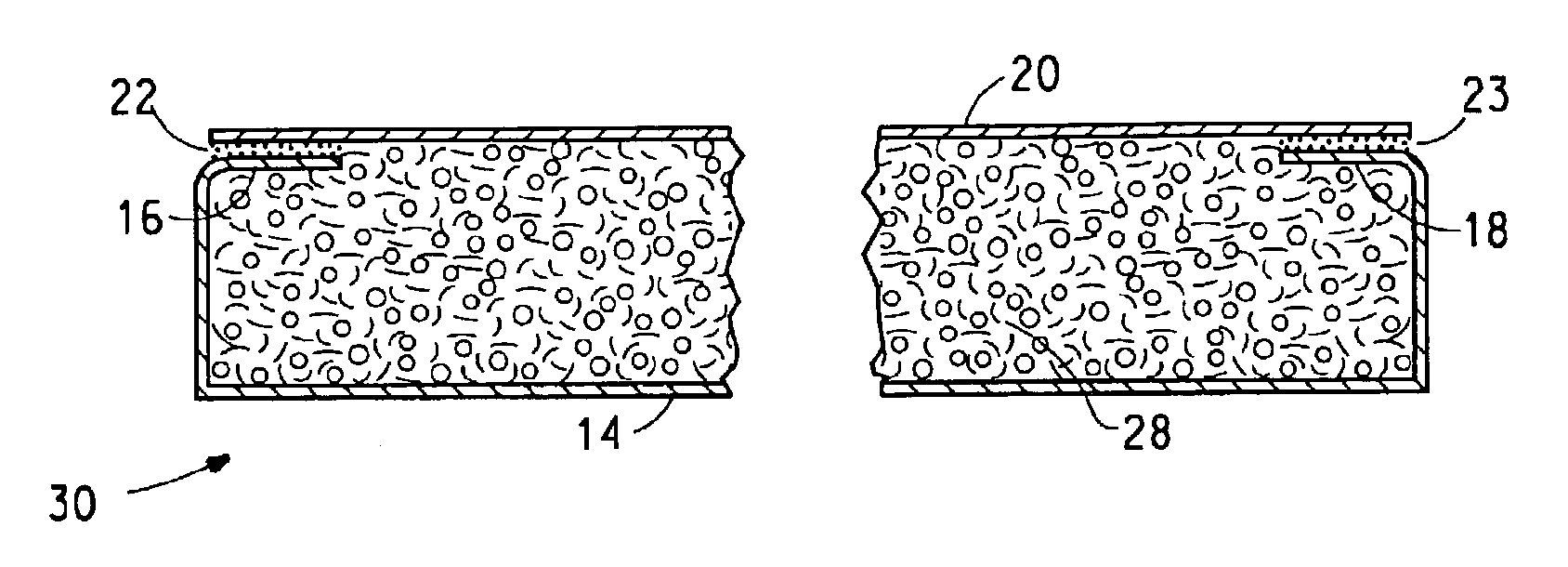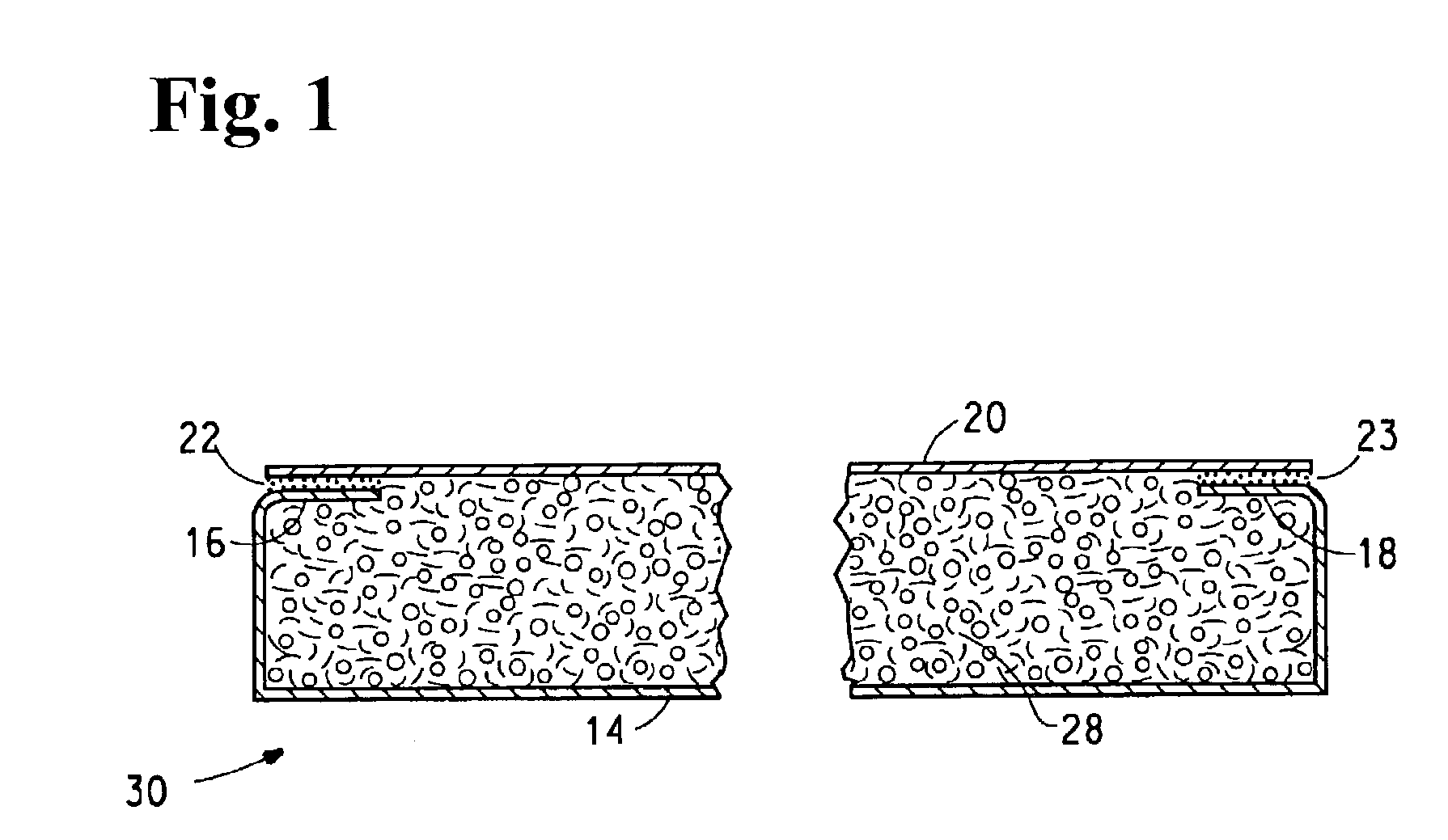Non-woven glass fiber mat faced gypsum board and process of manufacture
- Summary
- Abstract
- Description
- Claims
- Application Information
AI Technical Summary
Benefits of technology
Problems solved by technology
Method used
Image
Examples
examples 2-5
Preparation and Testing of Non-Woven Glass Fiber Mats of the Invention
[0052]Four non-woven fiberglass mats designated as Examples 2-5 are formed using a wet laid mat machine in the manner disclosed in U.S. Pat. No. 4,129,674. Each mat contains a blend of glass fibers of various average fiber diameters as set forth in Table III.
[0053]Examples 2-3 contain a blend of about 75 weight percent of fiber content H 137 chopped glass fibers about 12 mm long and having an average fiber diameter of about 11 μm, and about 25 wt. percent fiber content of CX 253 glass staple fiber having an average fiber diameter of about 5 μm. Both fibers are available from Johns Manville Corporation of Denver, Colo. The fibers make up about 73±1.5 wt. percent of the mat, based on the weight of the dry mat. The mat is made on a wet-laid, inclined wire screen mat forming machine. The fibers are bonded together with about 26±1.5 wt. percent of a cured modified acrylic binder, composed of Hycar™ 26138, an acrylic re...
example 6
Preparation and Testing of Gypsum Board Having Non-Woven Glass Fiber Facer Mat
[0059]The mats of the above Comparative Example 1 and Examples 3 and 5 of the invention are used as facers for the manufacture of gypsum board in a manner as disclosed in U.S. Pat. No. 4,647,496. Smoothness is determined by relative ranking of samples observed for shadows cast by surface irregularities when viewed under low incident light angle. Samples with deeper surface or non-uniform irregularities are ranked lower than shallow or uniform irregularity. Samples are ranked on a scale of 1-10 with 10 being completely smooth. The mats of Examples 3 and 5 produce gypsum board having smoothnesses rated at 7 and 5, respectively, and are therefore smoother than board made with the mat of Comparative Example 1, which has a smoothness rating of 4. It is unexpected and surprising that the smoothness of the dry cured mat is not indicative of the smoothness of that same surface after the mat passes through the gyps...
PUM
| Property | Measurement | Unit |
|---|---|---|
| Length | aaaaa | aaaaa |
| Length | aaaaa | aaaaa |
| Length | aaaaa | aaaaa |
Abstract
Description
Claims
Application Information
 Login to View More
Login to View More - R&D
- Intellectual Property
- Life Sciences
- Materials
- Tech Scout
- Unparalleled Data Quality
- Higher Quality Content
- 60% Fewer Hallucinations
Browse by: Latest US Patents, China's latest patents, Technical Efficacy Thesaurus, Application Domain, Technology Topic, Popular Technical Reports.
© 2025 PatSnap. All rights reserved.Legal|Privacy policy|Modern Slavery Act Transparency Statement|Sitemap|About US| Contact US: help@patsnap.com


